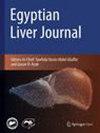Safety, risk stratification, and cost of ERCP in patients with cirrhosis: a prospective controlled study
IF 0.7
Q4 GASTROENTEROLOGY & HEPATOLOGY
引用次数: 0
Abstract
Given that ERCP has major procedure-related complications in non-cirrhotic patients, the complications and the cost of therapeutic ERCP were not studied in cirrhotic patients. We aimed to study the complications and cost of ERCP compared to patients without cirrhosis. Outcome and complications of therapeutic ERCP were prospectively studied in patients with cirrhosis and compared to patients without cirrhosis undergoing ERCP. Patients with cirrhosis were evaluated using the Child-Pugh classification, MELD, MELD Na, and APRI scores. Safety was assessed up to 30 days following the procedure. Pancreatitis, perforation, bleeding, and cardiopulmonary complications were not different in both groups (8% vs. 9.3, 0% vs. 2%, 3.3% vs. 4%, and 4% vs. 2% respectively), while cholangitis occurred more frequently in cirrhosis (13.3% vs. 1.3% respectively). Hospital stay was longer, and mortality and costs were significantly higher among patients with cirrhosis. Patients with Child C cirrhosis developed more complications and had higher mortality. A MELD score cut-off of ≥ 11.5 separated all mortalities. Similarly, MELD-Na and APRI separated patients with cirrhosis who had more frequent complications and mortalities. Patients with cirrhosis experienced more complications and costs, and cirrhotic patients who developed moderate to severe complications were more likely to die.肝硬化患者ERCP的安全性、风险分层和成本:一项前瞻性对照研究
鉴于ERCP在非肝硬化患者中会出现与手术相关的主要并发症,因此未对肝硬化患者治疗性ERCP的并发症和费用进行研究。我们旨在研究与非肝硬化患者相比,ERCP 的并发症和费用。我们对肝硬化患者ERCP的治疗效果和并发症进行了前瞻性研究,并与接受ERCP的非肝硬化患者进行了比较。采用Child-Pugh分类、MELD、MELD Na和APRI评分对肝硬化患者进行评估。安全性评估持续到术后 30 天。两组患者的胰腺炎、穿孔、出血和心肺并发症没有差异(分别为8% vs. 9.3%、0% vs. 2%、3.3% vs. 4%和4% vs. 2%),而肝硬化患者的胆管炎发生率更高(分别为13.3% vs. 1.3%)。肝硬化患者的住院时间更长,死亡率和费用明显更高。Child C 肝硬化患者出现的并发症更多,死亡率更高。MELD 评分≥ 11.5 的分界点将所有死亡率区分开来。同样,MELD-Na 和 APRI 将并发症和死亡率更高的肝硬化患者区分开来。肝硬化患者经历的并发症和花费更多,出现中度至重度并发症的肝硬化患者更有可能死亡。
本文章由计算机程序翻译,如有差异,请以英文原文为准。
求助全文
约1分钟内获得全文
求助全文

 求助内容:
求助内容: 应助结果提醒方式:
应助结果提醒方式:


